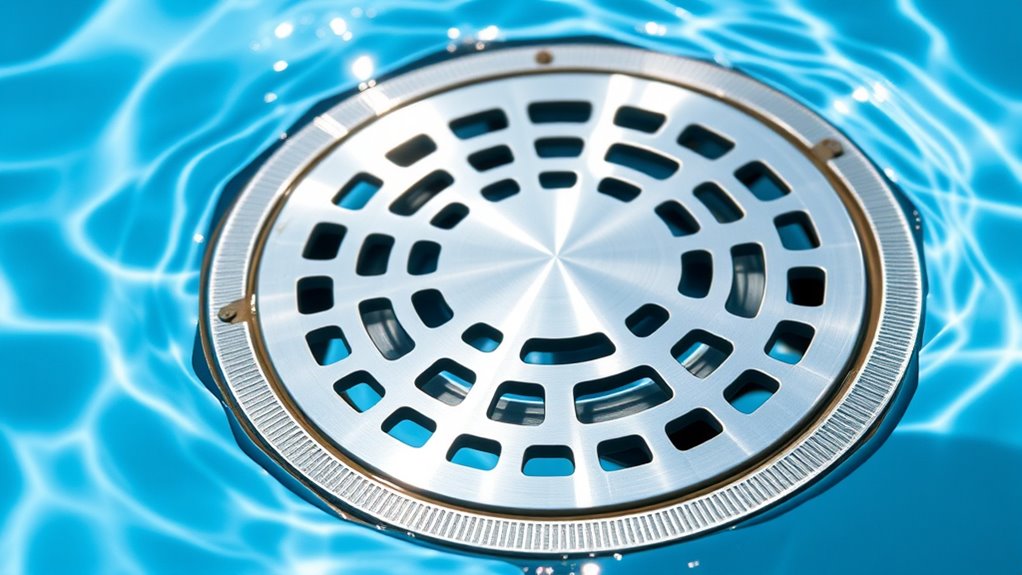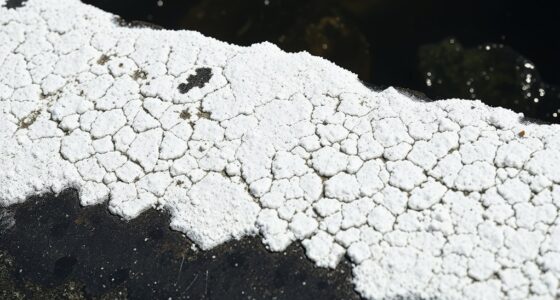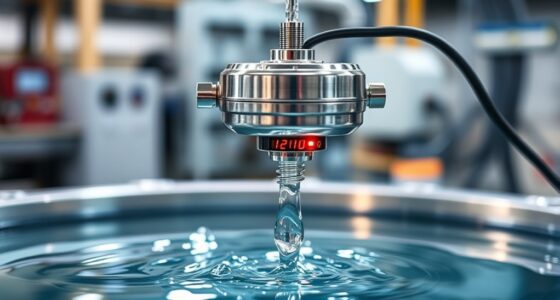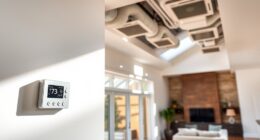To prioritize safety, make sure your pool has properly installed drain covers made from durable materials like stainless steel or high-strength plastic, designed with multiple small openings or solid surfaces to prevent entrapment. Install anti‑entrapment devices such as safety vacuum release systems, and regularly inspect and maintain all safety equipment. Follow recognized safety standards like ANSI or ASME, supervise swimmers, and keep the pool area clear. Keep these tips in mind, and you’ll be on your way to a safer swimming environment.
Key Takeaways
- Use drain covers made from durable materials with multiple small openings to prevent entrapment.
- Install safety vacuum release systems to automatically shut off pumps during blockages.
- Ensure drain covers meet recognized safety standards like ANSI/APSP or ASME.
- Regularly inspect and maintain drain covers and safety devices for damage or dislodgment.
- Educate pool users about hazards, avoiding standing on drain covers and practicing safety awareness.
Understanding the Risks of Entrapment
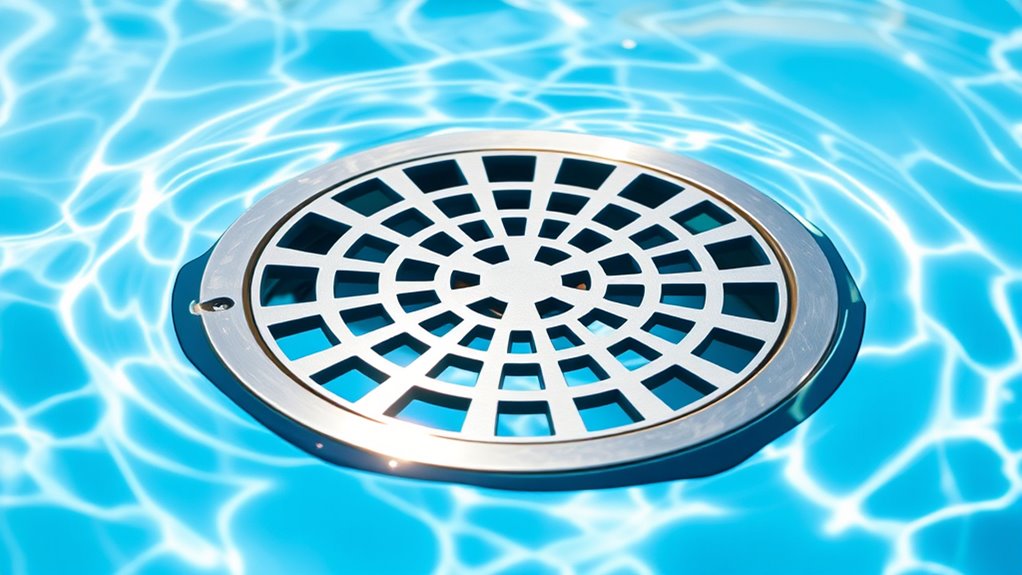
Understanding the risks of entrapment is essential because it can lead to serious injuries or even drownings. When you’re in the water, a faulty or missing drain cover can create powerful suction that traps you or a swimmer nearby. This suction can make it nearly impossible to free yourself, especially if you’re caught head or body first. Entrapment risks are higher in pools, hot tubs, and spas where drains are not properly protected or maintained. The danger isn’t just physical injury; it can also cause panic, which increases the risk of drowning. Recognizing these hazards helps you stay alert and cautious around drains, reducing the chance of accidents. Knowing the risks encourages you to prioritize safety and advocate for proper drain cover installation. Additionally, advances in automation technologies are being developed to help monitor and improve drain safety features.
Key Features of Effective Drain Covers
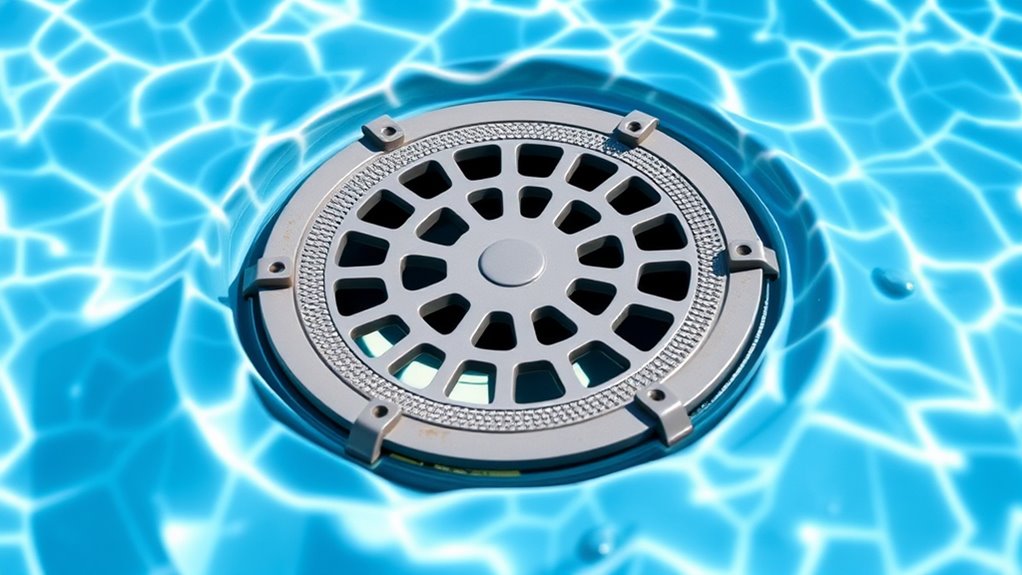
Effective drain covers are designed to prevent entrapment by minimizing suction forces and blocking the openings where swimmers might become trapped. Look for covers made from durable materials like stainless steel or high-strength plastic, which resist corrosion and damage. The design should feature a solid surface or multiple small openings to prevent hair, body parts, or jewelry from getting caught. The cover’s surface should be smooth, with no sharp edges or gaps that could cause injuries or entrapment. It’s also essential that the cover is securely fastened, preventing dislodgment during use. Choose covers that meet recognized safety standards, such as ANSI/APSP or ASME, ensuring they’ve been tested for reliability. Proper maintenance of drain covers is crucial to ensure ongoing safety and performance. Effective covers combine strength, proper design, and compliance to keep swimmers safe.
Anti‑Entrapment Devices and Safety Measures
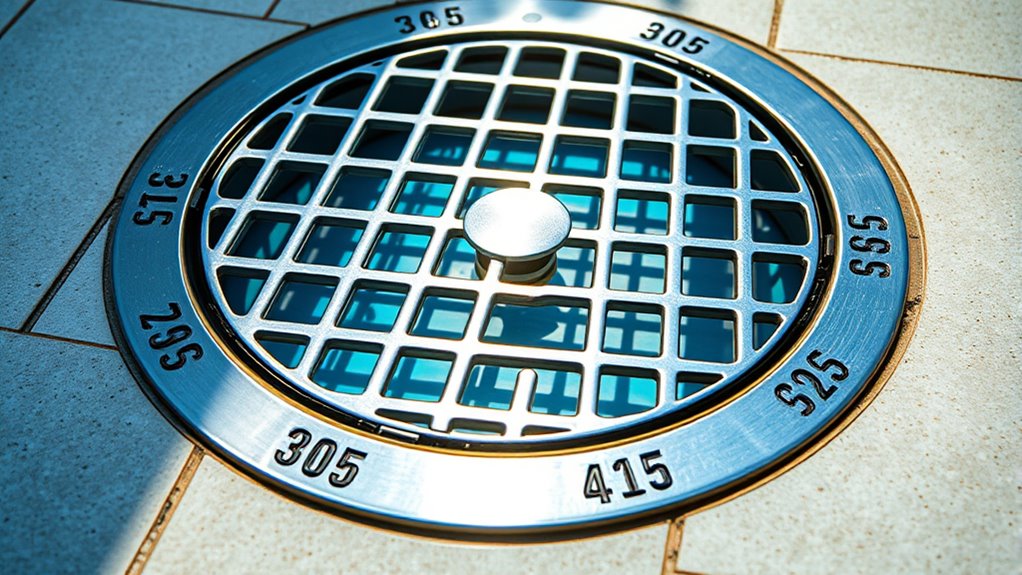
To prevent entrapment incidents, implementing specialized anti‑entrapment devices and safety measures is crucial. You should install devices like safety vacuum release systems, which automatically shut off the pump if a blockage occurs, reducing the risk of entrapment. Use drain covers that are designed with anti‑entrapment features, such as multiple openings or removable grates, to minimize suction hazards. Regularly inspect and maintain these devices to guarantee they function correctly and remain in good condition. Educate pool users about safety practices, like avoiding standing or sitting on drain covers. Incorporating these measures creates a safer environment, substantially lowering the chance of entrapment. Updated safety standards emphasize the importance of Vetted – Security Zone Info, which can help inform the selection of compliant safety devices. Remember, proactive safety measures are essential to protect swimmers and prevent accidents around pool drains.
Compliance With Safety Standards and Regulations
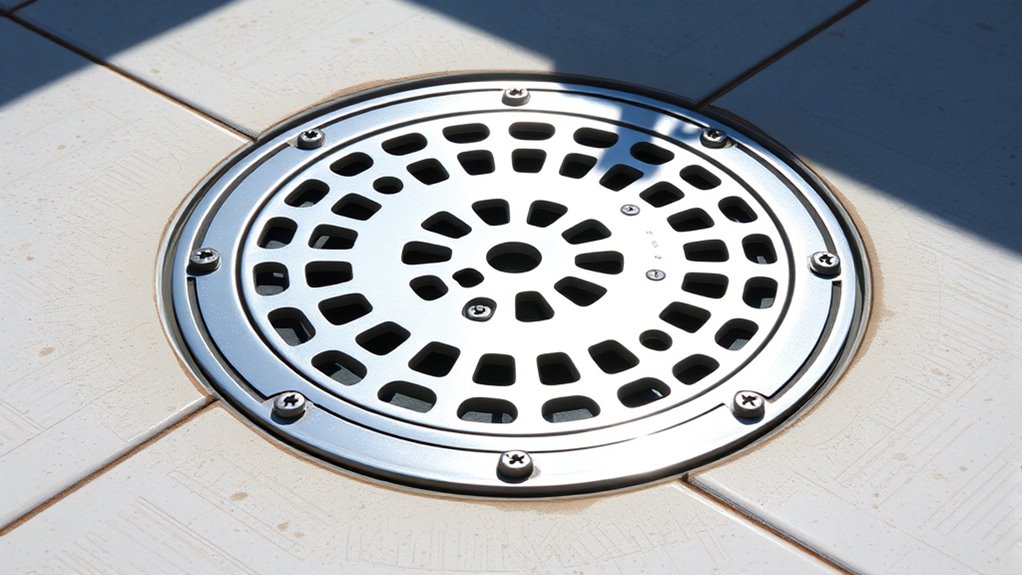
Ensuring your pool meets all safety standards and regulations is essential for preventing entrapment and other accidents. When you comply with these rules, you’re creating a safer environment for everyone. Imagine:
- Installing compliant drain covers that are tested and labeled to meet ANSI/ASME standards.
- Regularly inspecting your pool’s plumbing and drain systems to catch any non-compliance issues early.
- Keeping detailed records of safety inspections and maintenance to guarantee ongoing adherence to regulations.
- Incorporating body awareness techniques to better recognize and respond to potential safety hazards in your pool environment.
Tips for Maintaining a Safe Swimming Environment
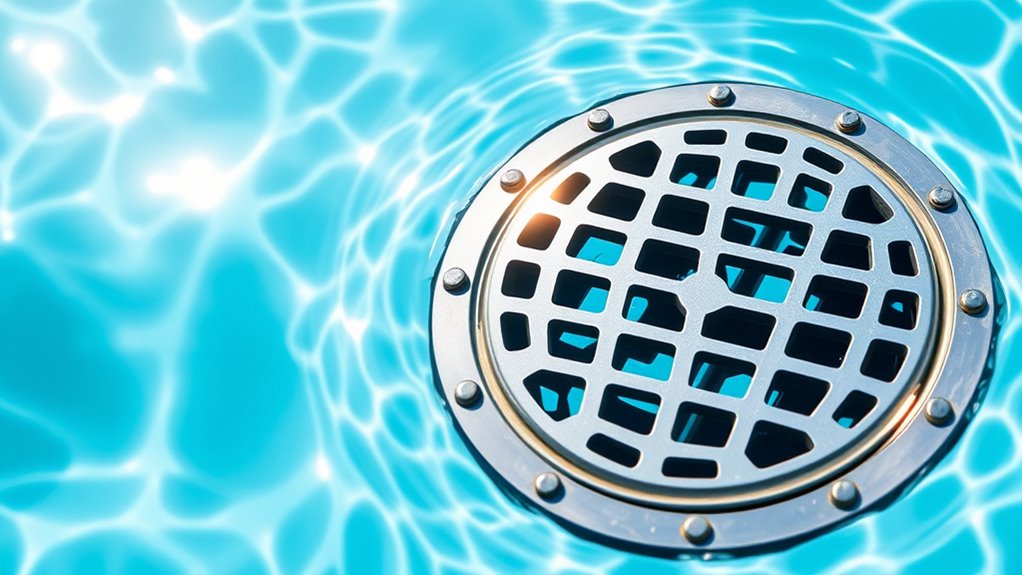
Maintaining a safe swimming environment requires regular vigilance and proactive measures. Always inspect your pool and drain covers regularly for damage, cracks,, or looseness. Make certain that all covers meet safety standards and are properly secured. Keep the pool area clear of debris, toys, and other objects that could cause slips or falls. Enforce strict rules for pool use, such as no running or diving in shallow areas, and always supervise swimmers, especially children. Maintain proper water chemistry and circulation to prevent algae and bacteria growth, which can create hazards. Install safety equipment like life hooks, rescue rings, and a first aid kit nearby. Regularly review safety procedures with everyone using the pool, and address any hazards immediately to keep your swimming environment safe. Additionally, understanding water circulation systems can help in maintaining optimal water quality and safety.
Frequently Asked Questions
How Often Should Drain Covers Be Inspected for Damage?
You should inspect drain covers weekly for damage or wear. Regular checks help you catch cracks, corrosion, or loose fittings early, preventing potential entrapment hazards. Make sure to remove debris and test the cover’s stability during each inspection. If you notice any damage or signs of deterioration, replace the cover immediately. Consistent inspections keep your pool area safe and compliant with safety standards.
What Are the Signs of a Malfunctioning Anti-Entrapment Device?
Did you know that over 80% of drain-related injuries could be prevented with proper anti-entrapment devices? If you notice the device isn’t fully secured, makes unusual noises, or if the cover moves easily, it’s malfunctioning. You might also see cracks, corrosion, or debris obstructing it. These signs indicate you should replace or repair the device immediately to guarantee safety and prevent entrapment risks.
Are There Specific Materials Recommended for Durable Drain Covers?
You should choose drain covers made from durable materials like stainless steel, cast iron, or heavy-duty plastic. These materials resist corrosion, impact, and wear over time, ensuring longevity and safety. Avoid flimsy or brittle options, as they can crack or break, increasing the risk of entrapment. Regularly inspect your drain covers for damage or corrosion, and replace them promptly to maintain a safe swimming environment.
How Can Pool Owners Ensure Compliance With Local Safety Regulations?
Imagine you’re in a scene straight out of a vintage film, ensuring safety is your main act. To comply with local safety regulations, you should regularly check that your pool’s drain covers meet current standards, keep documentation of upgrades, and consult local codes or professionals. Staying proactive, attend safety seminars, and stay informed about new regulations. Your vigilance guarantees a safe, enjoyable swimming experience for everyone.
What Training Should Staff Receive for Emergency Drain Entrapment Situations?
You should train staff on recognizing entrapment hazards, performing quick rescues, and using safety equipment like pole hooks and scissors. They need to understand how to shut off power to pumps, communicate effectively during emergencies, and follow emergency response protocols. Regular drills are essential to keep skills sharp. Make sure they’re familiar with local safety regulations and proper procedures, so they can respond swiftly and confidently during drain entrapment incidents.
Conclusion
By staying vigilant and ensuring your pool has the right drain covers and safety measures, you can substantially reduce entrapment risks. Did you know that over 300 entrapment incidents have been reported in the past decade? That’s why understanding safety standards and maintaining your equipment is vital. Keep safety your top priority, regularly inspect your drains, and educate everyone about pool safety. Together, you can create a safer swimming environment for all.
